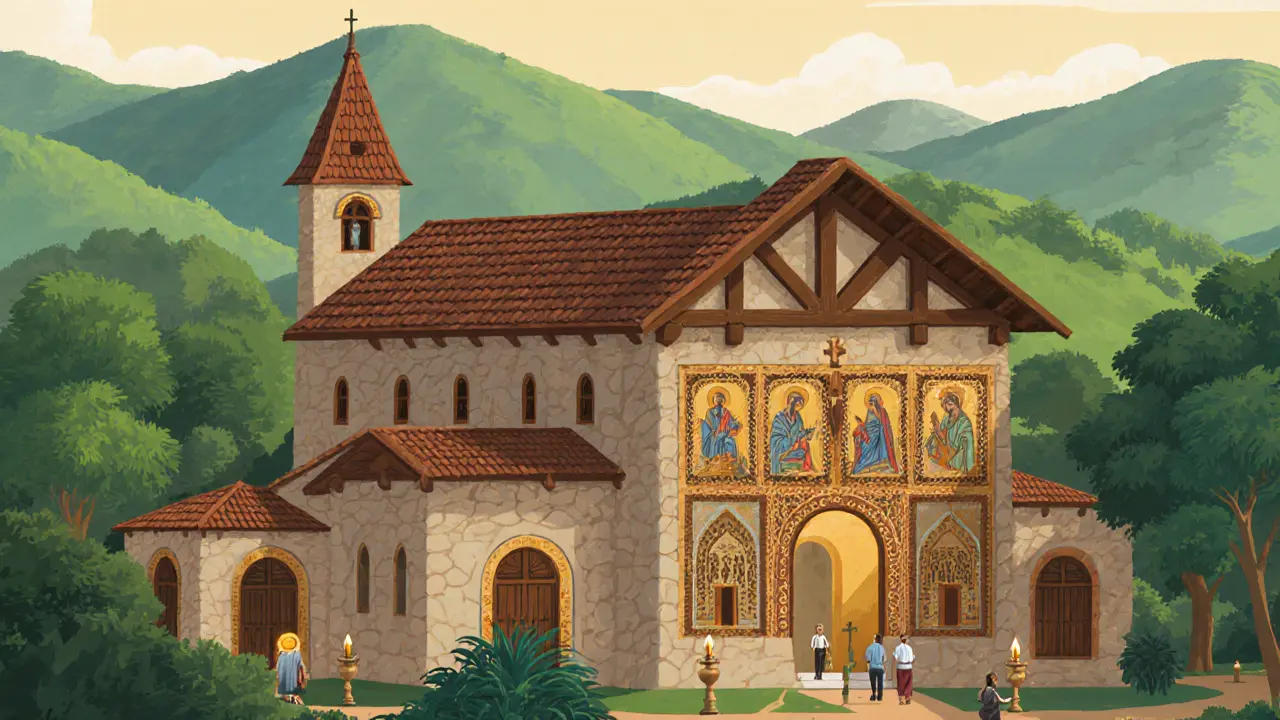Kothamangalam Church: History, Schisms, and the Catholicos of India
When you hear Kothamangalam church, a historic Christian center in Kerala, India, known for its deep ties to the ancient Saint Thomas Christian tradition. Also known as Kothamangalam St. George Orthodox Cathedral, it has stood for centuries as both a place of worship and a symbol of religious identity in a community that traces its roots back to the apostle Thomas. This isn’t just another old church—it’s the heart of a centuries-old divide that still shapes how millions of Indian Christians see their faith today.
The story of the Kothamangalam church is inseparable from the Catholicos of India, the title held by two rival leaders who each claim authority over different branches of the Saint Thomas Christians. One leads the Malankara Orthodox Syrian Church, an autocephalous (self-governing) body that broke from foreign control in the 19th century. The other leads the Jacobite Syrian Christian Church, a faction that remains under the spiritual authority of the Syriac Orthodox Patriarch of Antioch. Both use the same title, but they don’t recognize each other’s leadership. This isn’t just theological—it’s political, cultural, and personal. The Kothamangalam church became a key battleground in this split, with each side claiming historical ownership of its lands, records, and traditions. You can’t understand modern Indian Christianity without understanding this fracture.
What makes this even more complex is that the Saint Thomas Christians aren’t just one group—they’re a mosaic of families, languages, and loyalties. Many still speak Malayalam at home, attend services in Syriac, and live in towns like Kothamangalam where church buildings dominate the skyline. Their history isn’t written in textbooks—it’s in the names carved on tombstones, the hymns sung during Easter, and the quiet debates over who has the right to ordain bishops. This isn’t ancient history. It’s alive. It affects who gets to lead, who inherits property, and how children are baptized today.
If you’ve ever wondered why two churches with nearly identical names, rituals, and even altar setups can’t share a building, the answer starts here—in Kothamangalam, in the rivalry of the Catholicos, and in a community that refused to let outside powers decide their future. Below, you’ll find posts that dig into the people, the politics, and the legacy behind these churches—what happened, who was involved, and why it still matters in 2025.
St. Mary's Jacobite Syrian Cathedral in Kothamangalam: History, Faith, and the Truth Behind the Holy Belt Claims
St. Mary's Jacobite Syrian Cathedral in Kothamangalam is one of India's oldest Christian churches, with roots dating to the 14th century. Though often linked to the Holy Belt relic, no evidence supports this claim - its true power lies in its living faith and centuries-old traditions.
Details +